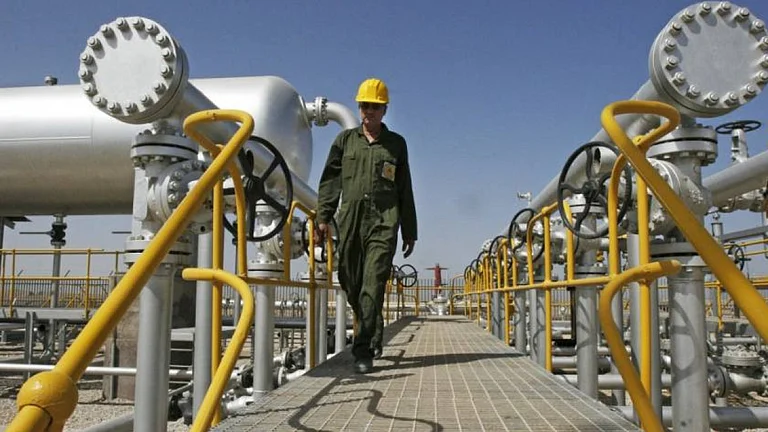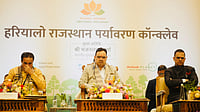A Dutch court’s ruling on January 22, ordering the Netherlands government to cut its nitrogen emissions by 2030, is a ruling that can severely impact construction and pressurise farmers to reduce livestock, reported Reuters. Agriculture, particularly livestock farming, plays a crucial role in the Netherlands’ nitrogen emissions.
Greenpeace brought the case, claiming that the government was not doing enough to lower illegally high levels of nitrogen oxide emissions caused by intensive farming and heavy use of fertilisers, as well as traffic and construction in the densely populated Netherlands.
In the Netherlands, agriculture, including livestock farming, is a significant contributor to nitrogen emissions. To meet the court's ruling and reduce emissions, farmers may need to adopt more sustainable farming practices or reduce the number of livestock they keep. This could help decrease ammonia emissions, which is a major contributor to nitrogen pollution.
The ruling indicates to the broader environmental issue of nitrogen pollution, which is not only a concern restricted to Netherlands but also a global challenge exacerbated by agriculture practices and industrial activities.
Managing Nitrogen Pollution
The environmental impact of nitrogen pollution is outlined in a report published by the Food and Agriculture Organization of the United States on January 20. According to the report, humans add around 150 teragrammes (Tg) of reactive nitrogen to the Earth’s land surface each year through agriculture and industry which is more than double the pre-industrial rate. Experts warn that climate change could further escalate this rate to about 600 Tg per year by 2100, increasing nitrogen loss into the environment and threatening ecological balance.
One of the ways to manage nitrogen pollution is improving Nitrogen Use Efficiency (NUE). NUE refers to the ratio of nitrogen recovered in the final output to the total nitrogen used as input. Increasing NUE can help reduce nitrogen losses during production process, which is crucial for reducing pollution, according to the report released on January 20.
Livestock is the main contributor to nitrogen emissions accounting for about a third of the total nitrogen emissions produced by human activities. Other major contributors include synthetic fertilisers, land-use change and manure emissions, as per the report.
Nitrogen pollution has already surpassed the planetary boundaries — an environmental threshold within which humanity can safely operate. The exceedance of these boundaries has grown substantially since 2015, highlighting the need for urgent action. However, the report emphasised that regional heterogeneity needs to be considered, as policies and solutions need to be tailored to local contexts to be most effective.
The rise in nitrogen fertilisers over the past century has significantly contributed to bolstering agricultural production, improving food security and supporting nutrition for global population growth. However, improper use of nitrogen has led to severe environmental consequences including air, water and soil pollution, resulting in biodiversity loss and exacerbating climate change.
The report notes that the global crop yield has been rising steadily from an average of 19 kg of nitrogen per hectare per year in 1961 to 65 kg N/ha/year in 2022. NUE, however, declined from 56 per cent in 1961 to 40 per cent in the 1980s and has since increased again to 56 per cent in 2022.
As per the report, nitrogen pollution was the most severe in North America, Western Europe and certain Asian countries “where fertilisers have been extensively used and misused for decades”.
In Southeast Asia, it decreased significantly from 65% in 1961 to 45% in the 1990s, to increase again to 54% in 2022. In North America, NUE first decreased from 65% in 1961 to below 50% in the 1980s, then increased to 69% in 2022. The report also found that NUE varied based on the type of crop. For example, soybeans had an NUE as high as 80% in 2010, while fruits and vegetables had NUEs as low as 14% in the same year.
The report also outlined several recommendations to address nitrogen pollution. These include urging the fertiliser industry to reduce greenhouse gas emissions during production and minimise waste during storage, transport, and land application. The report also recommended national governments to promote biological nitrogen fixation through crop rotations with leguminous crops like soybean or alfalfa.
Furthermore, the report called for guidelines to help livestock farmers in managing manure more effectively and reducing nitrogen losses. It further recommended the importance of using organic nitrogen fertilisers and promoting spatial planning to reduce livestock concentrations in certain areas. The report advocates for the integration of sustainable nitrogen management into national policies and commitments to reduce nitrogen pollution, aligning with global climate and biodiversity goals.
The need for coordinated action across nations and industries is crucial to mitigate the environmental impacts of nitrogen and achieve long-term sustainability.































